Isle of Skye guide 
On the Isle of Skye, nature and history come together in a perfect symphony - dramatic cliffs, mist-shrouded mountains, legends... From the iconic Old Man of Storr to the fairytale Fairy Pools. The island also has a rich history connected with the MacLeod and MacDonald clans, which you can discover at Dunvegan Castle. And if you like a bit of magic, head to Fairy Glen or Kilt Rock, where a waterfall falls directly into the sea. The island produces excellent whiskey (Talisker Distillery). Get your sturdy shoes and camera ready and let's go hiking!
Portree - The capital of the island, where you can admire the harbor with its colorful houses. Nearby is the famous Old Man of Storr rock formation.
Dunvegan - The historic town on the west coast of the island is famous mainly for the impressive Dunvegan Castle.
Broadford - The second largest city of the island is located on the southeast coast. In Broadford Bay you can observe marine animals - seals, dolphins and sometimes even whales.
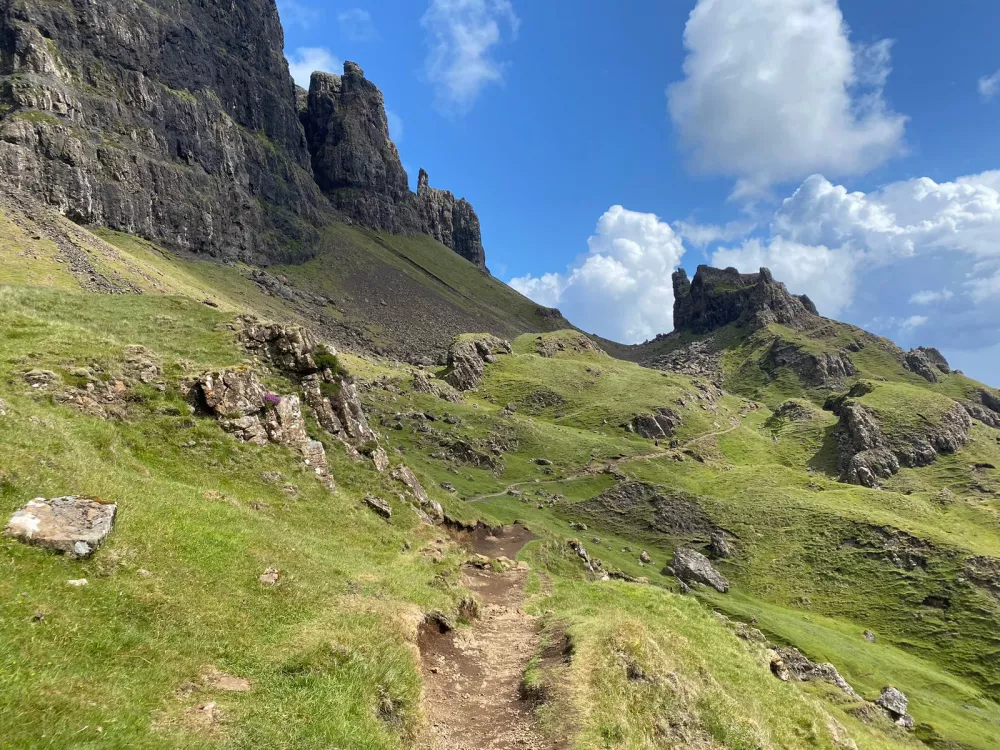
The Isle of Skye, also known as the Isle of Skye, is the largest and northernmost island of the Inner Hebrides in Scotland. This picturesque island is a popular tourist destination due to its dramatic landscape, rich history and cultural traditions. It covers approximately 1,656 km² and has around 10,000 inhabitants.
Here you can admire beautiful natural scenery - high mountains, deep valleys, waterfalls and wild coasts. The main natural attractions include the Cuillin Mountains, cliffs and rock formations such as the Old Man of Storr or the Quiraing, popular with both hikers and climbers.
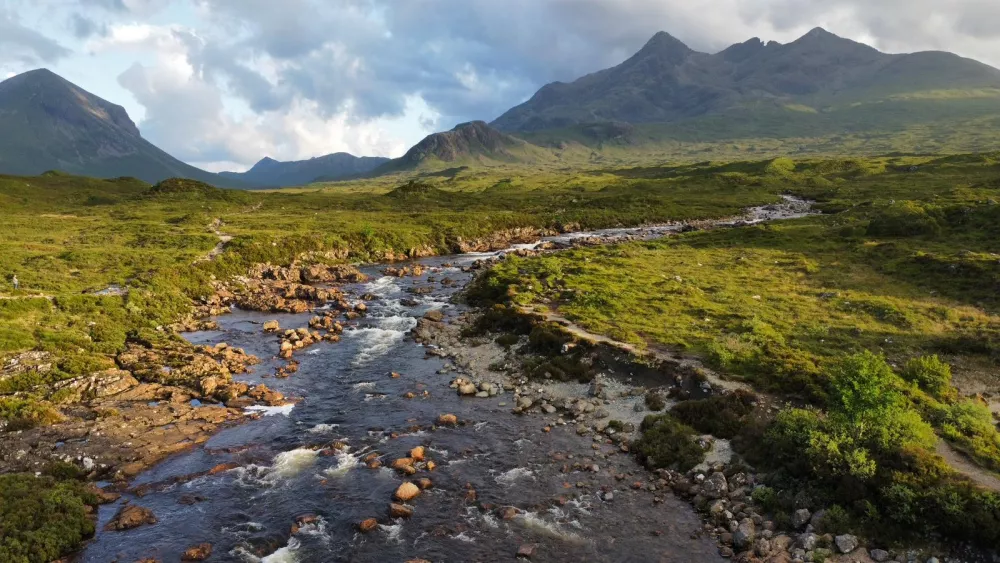
The Isle of Skye is associated with a rich history and Celtic culture. Its name comes from Norwegian and means "Cloud Island". The history of Skye dates back to the times of the Picts and Vikings. The island played an important role during the Scottish Clan Wars. Skye was ruled by the MacLeod and MacDonald clans.
Historical monuments include Dunvegan Castle, seat of the MacLeod clan, the longest inhabited castle in Scotland.
And what should you not miss on Skye?
Fairy Pools - A natural cascade of azure lakes and waterfalls in the Glen Brittle valley. The lakes lie just below the Cuillin mountains and attract visitors with their crystal clear icy water, sought out by adventurers for their “wild swimming” or photographers for the magical setting. The name “Fairy Pools” only began to appear in the 1930s and is linked to local Celtic legend of fairies and mythical creatures – such as selkies (seals that can take on human form on land).
Address: Glen Brittle, Isle of Skye.
Neist Point - The westernmost tip of the Isle of Skye, with dramatic cliffs. Home to one of Scotland's most famous lighthouses, it offers spectacular sea views and often the chance to spot dolphins and whales.
Address: Glendale, Isle of Skye.
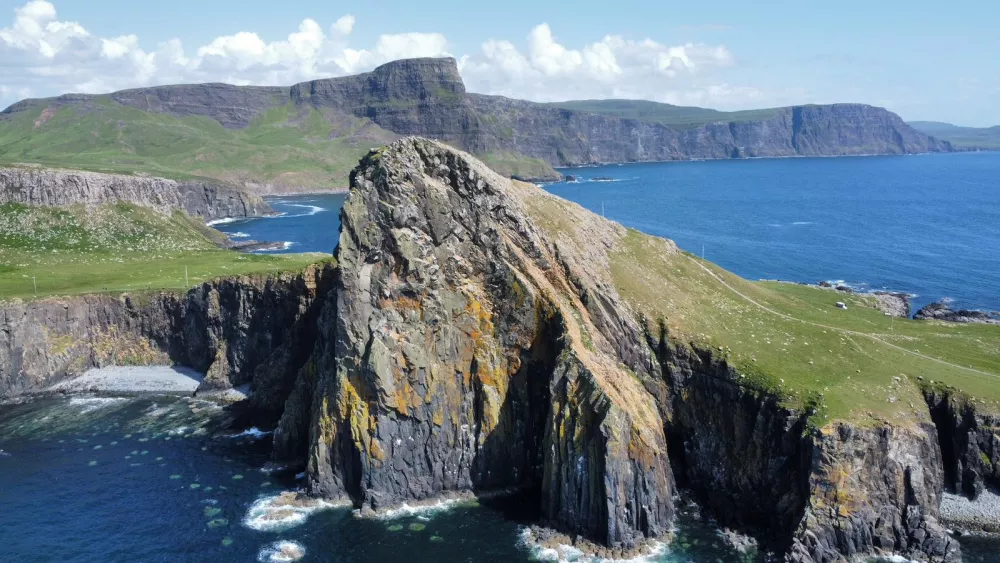
Talisker Distillery - The oldest still-operating distillery on the Isle of Skye was founded in 1830 by brothers Hugh and Kenneth MacAskill. One of the interesting rituals at the distillery is the whisky-oyster tasting – local tradition recommends drinking the whisky, eating an oyster, then pouring a little Talisker into the empty shell and drinking it, which is supposed to enhance the whisky’s maritime notes.
Address: Carbost, Isle of Skye.
Sligachan Old Stone Bridge - This iconic bridge over the River Sligachan was built in the early 19th century by the famous Scottish engineer Thomas Telford. You can find the bridge at the foot of the Cuillin Mountains near the village of Sligachan. For many years it was the main crossing over the River Sligachan. Today it is only used by pedestrians and cyclists. Local legend says, that if you wash your face in the River Sligachan under the bridge, you will gain eternal youth and beauty.
Address: Off the A87, next to Sligachan.

How do you get to the island?
The Isle of Skye can be reached via the Skye Bridge from the mainland or by ferry. The island is best travelled by car as buses do not run everywhere. The Isle of Skye is also popular with cyclists.
Portree guide
Portree, the capital and largest town on the Isle of Skye, has a population of about 2,500. This picturesque town is located on the north-east coast of the island, surrounded by dramatic hills and seashore. Portree is not only the cultural and commercial center of the island, but also a popular tourist destination thanks to its strategic location and beautiful surroundings.
The name "Portree" comes from the Gaelic "Port Rìgh", which means "King's Port". The name refers to the visit of King James V of Scotland in 1540, who sailed here to gain the support of the local clans. The city itself was created only later in the 18th century, when they expanded the wharf for fishermen and merchants.
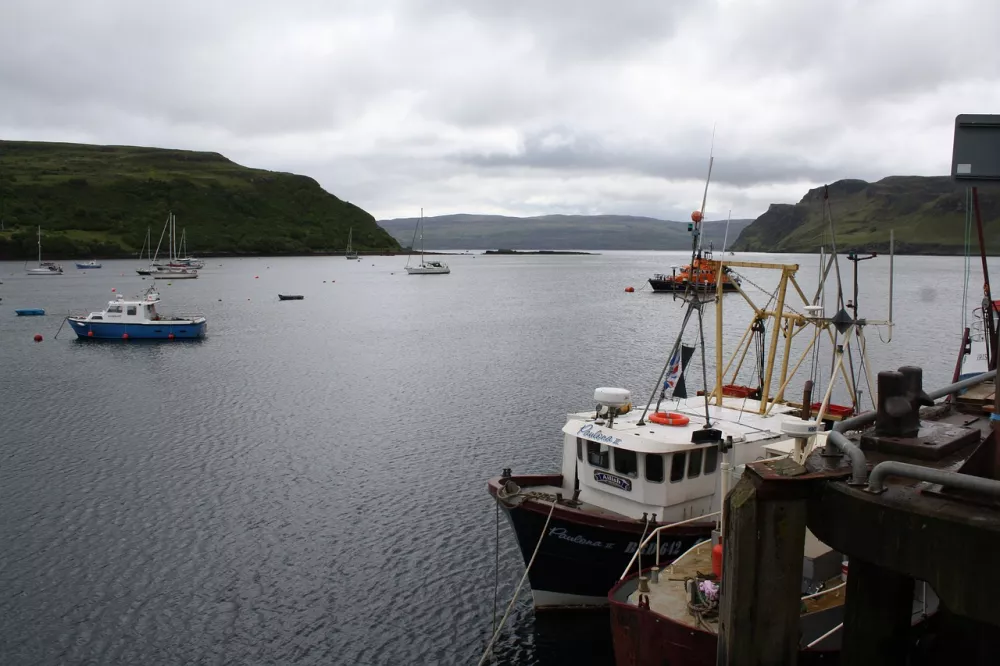
Portree is easily accessible by car, with the main link from the mainland to the Isle of Skye being via the Skye Bridge. There are also buses from the town to various parts of the island, making it an ideal starting point for travelers without their own car.
Sights and attractions
Colorful houses by the harbor - Portree is symbolised by its picturesque, colourfully painted houses lining the harbour, which create a beautiful contrast with the surrounding countryside. Locals have been painting their houses in bold colours for practical reasons since the early 19th century – traditionally this helped fishermen and sailors find their way home in bad weather or fog. The view of the colourful houses and harbour is one of the most photographed in Scotland.
Address: Quay Street and Bosville Terrace, Portree.
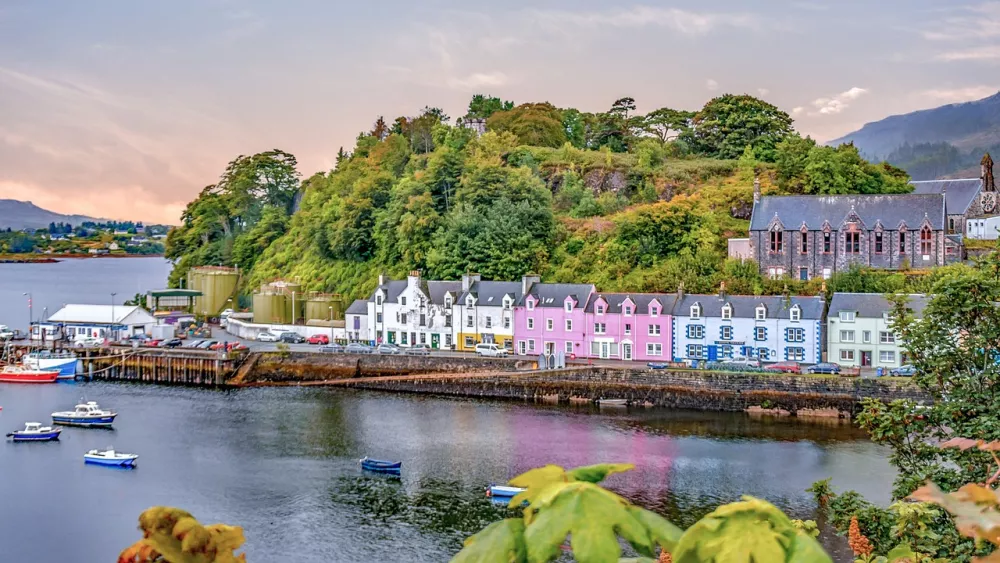
Portree Harbor - The traditional fishing port also serves as a starting point for various boat trips. You can go dolphin, whale or seabird watching, for example. Be sure to try fresh seafood or freshly caught fish in one of the popular restaurants.
Address: Quay Street, Portree.
Aros Centre - The cultural centre offers exhibitions on Scottish culture and the history of the Isle of Skye, theatre performances and films. The site is fully accessible, has children's play areas, a restaurant with views of the surrounding countryside and free parking. The nearby forest park with nature trails will be enjoyed not only by families and nature lovers.
Address: Viewfield Road, Portree.
Ben Tianavaig – This 413-metre-high hill is located near Portree. Many tourists come here to admire the stunning views of the island of Raasay, Portree Bay and the Cuillin massif. On clear days you can see as far as the Outer Hebrides. It is home to golden eagles and white-tailed eagles. The route to the summit starts from the small village of Camustianavaig and is approximately 5–7 km long, depending on the chosen route.
Address: Camustianavaig, Portree.
Old Man of Storr - This iconic basalt monolith near Portree is one of the most popular tourist attractions on Skye. Its shape resembles the profile of an old man or wizard looking out over the landscape – hence its name. The ascent to the spire is one of the most popular hikes on Skye. From the car park on the A855, there is a marked path of about 3.8 km, the hike itself takes about 1-1.5 hours.
Address: A855, north of Portree.
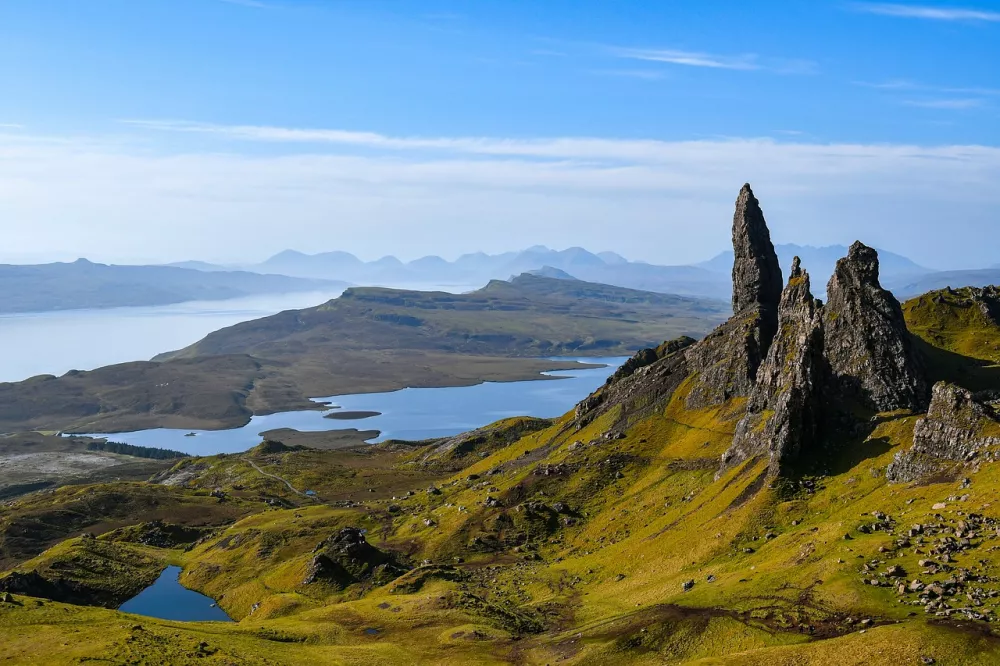
Accommodations
Portree, the tourist center of Skye, offers a wide range of accommodation, from apartmetns and hotels to B&Bs and hostels. Thanks to its location, the city is an ideal base for exploring the entire island. Portree also has a number of restaurants serving traditional Scottish cuisine, including fresh seafood, Scottish cheeses and whisky.
If you are looking for a pleasant hotel, we can recommend for example the 4* Cuillin Hills Hotel. The hotel's terrace and some rooms offer wonderful views across Portree Bay to the Cuillin Mountains. The local restaurant/gallery features works by local artists and local seafood specialties to eat. You can walk around the hotel garden or further to the port, which is located less than a kilometer from the hotel.
Among the many guest houses, let's mention, for example, Orchard House Bed and Breakfast, which is located about half a kilometer from the city center. In the room you have free Wi-Fi, a kettle, snacks and a fridge. You can park for free in the hotel's private parking lot. But be careful, even if the accommodation has breakfast in its name, it does not offer breakfast.
Right in the center of the town you will find the Portree Youth Hostel, which offers both shared rooms and private double and quadruple rooms. You can either buy breakfast or prepare it yourself in the shared kitchen. There is also a common room and board games.
For a complete offer of accommodation in Portree, we recommend using A-HOTEL.com or Booking.com.
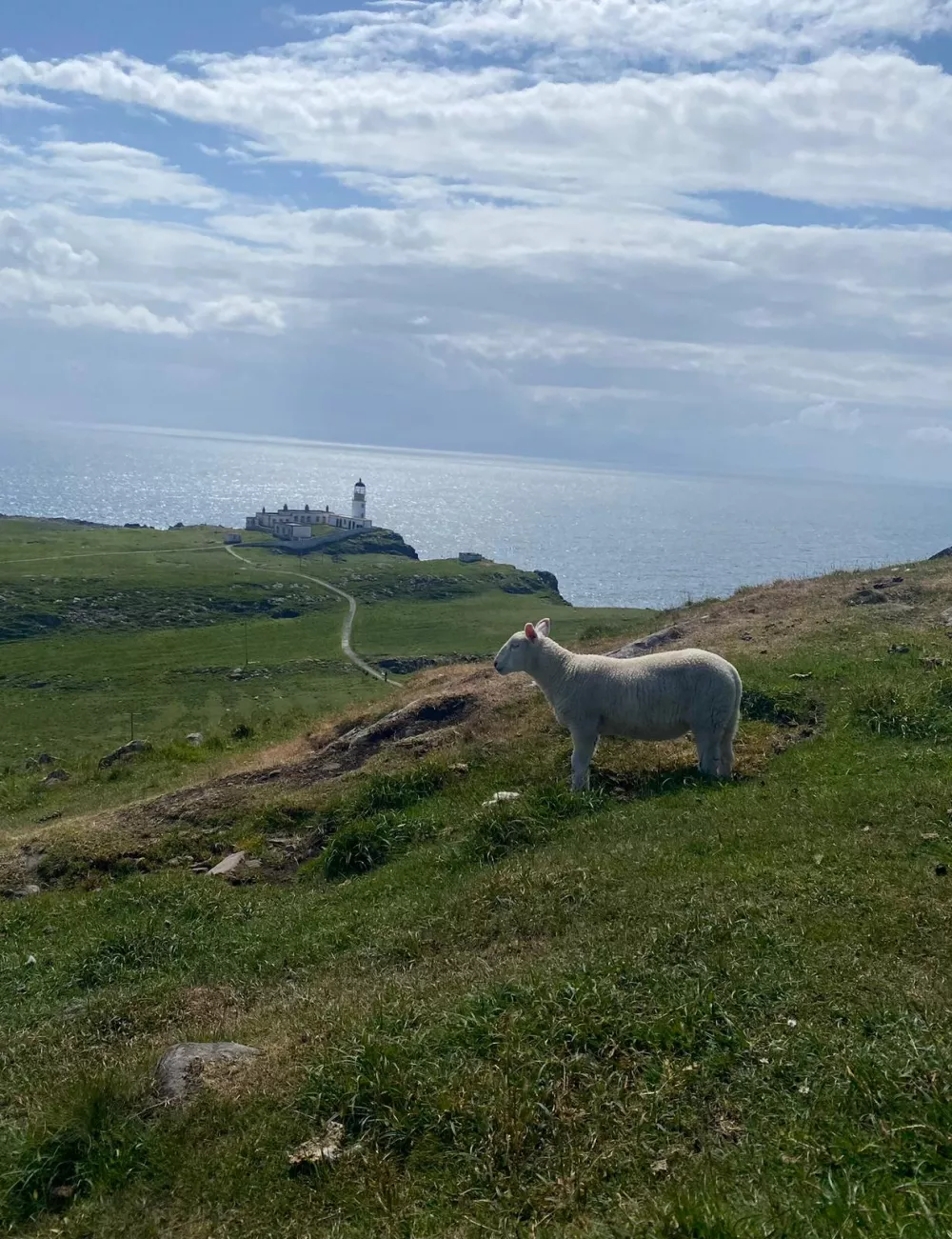
Dunvegan Guide
Dunvegan, a small village on the northwest coast of the island is made famous by the iconic Dunvegan Castle, the longest continuously inhabited castle in Scotland. The village is surrounded by beautiful nature. You can also get an insight into Scottish history and culture here. Although Dunvegan is a small village, many tourists head here.
The best way to get to Dunvegan is by car. The village is about an hour's drive from the capital Portree.
The area around Dunvegan attracts nature lovers and hikers. Not far from the castle is Loch Dunvegan, a lake popular for boat trips where you can spot seals and other local wildlife. Boat trips from Dunvegan Harbor are among the most popular attractions, especially for those who want to see the seal colony.
Dunvegan Castle - Dunvegan Castle is the main attraction of the area. The castle was built in 1266. It served as the seat of the Clan MacLeod for centuries and still serves as the family home. The castle offers visitors the opportunity to explore the rich history of Clan MacLeod, including relics such as the famous "Fairy Flag" which is said to have magical properties. For example, they also exhibit the Danvegan Cup, a silver cup from the 15th century, one of the oldest family heirlooms in Britain. Visitors can also view the richly decorated interiors of the castle and enjoy strolling in the beautiful gardens that surround the castle and extend to the shores of Loch Dunvegan.
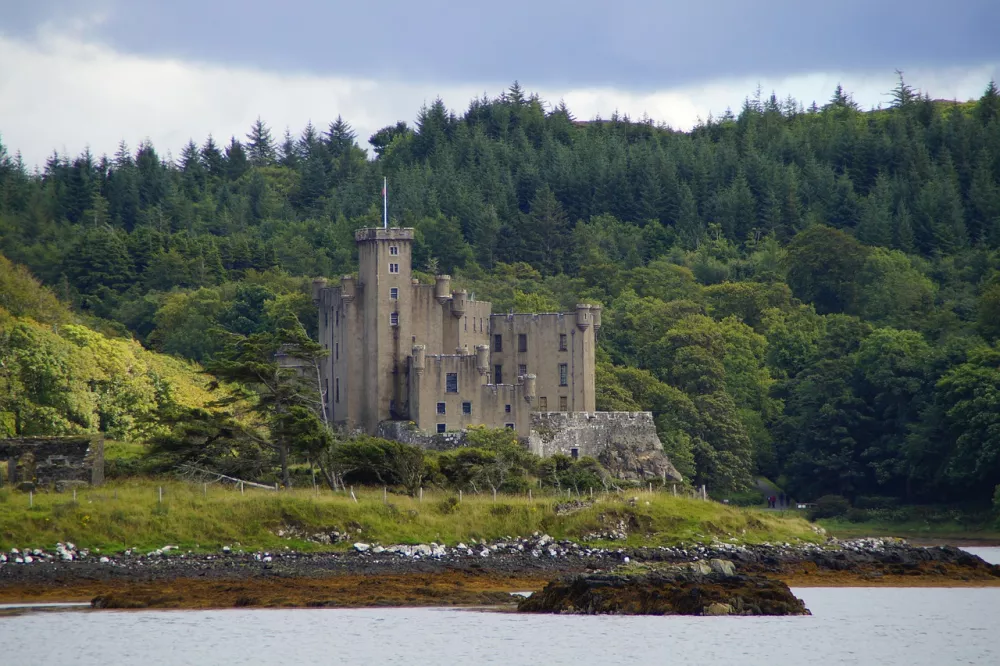
Accommodations
Dunvegan has several accommodation options, from small guesthouses to holiday houses. Local restaurants often serve fresh seafood such as Scottish salmon and oysters and other traditional Scottish dishes. Popular options include The Old School Restaurant or Dunvegan Bakery.
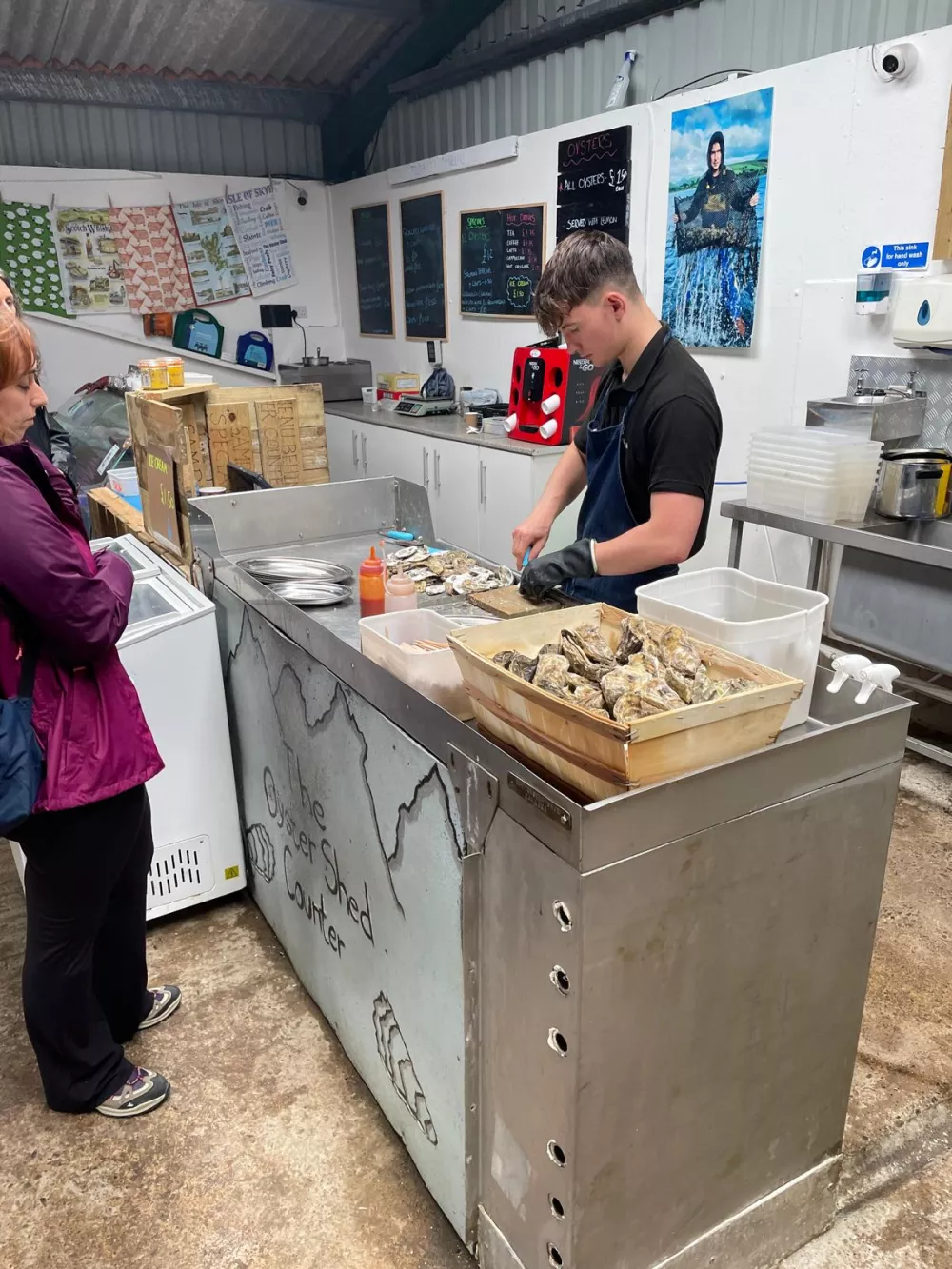
Dunvegan's only hotel, Atholl House Skye, is half a kilometer from the town centre. It offers accommodation with breakfast in single or double rooms. You can park for free in the hotel area. You have a garden and a common room at your disposal. The hotel has a restaurant and a bar.
The Brae Cottage guest house is located just outside the town of Dunvegan. Guests can relax in the garden or on the sunny terrace with beautiful views of the mountains. The accommodation offers a continental breakfast. Here you can use the shared kitchen, common room or laundry room. You can park for free at the guesthouse.
For a complete offer of accommodation in Dunvegan, we recommend using A-HOTEL.com or Booking.com.

Broadford Guide
Broadford, the second largest town on the Isle of Skye, is situated on the south-east coast of this picturesque island. It lies on the A87 main road which connects mainland Scotland with the town of Portree. Due to its convenient location, Broadford serves as an important transport and tourist center of the island.
The name Broadford comes from the Norwegian "Breiðafjorðr", meaning "wide fjord". It thus refers to the time when Skye was inhabited by Norwegian Vikings. The town has long been a fishing village, but with the advent of tourism and increased infrastructure, it has become a popular tourist destination. In the 19th century, Broadford played a significant role in the production of slate, which was quarried in the surrounding hills.
Broadford is surrounded by beautiful countryside that beckons to those who love hiking. Not far from the town are the Red Cuillin Hills, where you'll find a variety of hiking trails for all experience levels.
There are boats from Broadford to the nearby Isle of Raasay, located in the strait between Skye and the mainland. Raasay is not only loved by people looking for an escape into the wilderness.
About 3 miles north of Broadford is the beautiful white sand beach of Ashaig, a great place to relax, walk and photograph the wonderful coastal views.
In the nearby Kinloch Nature Reserve you will find a variety of fauna and flora. Here you can observe seabirds, otters and deer.
In Broadford Bay you can see marine animals such as seals, dolphins and sometimes even whales. Various water activities are also available here, including sailing and kayaking.
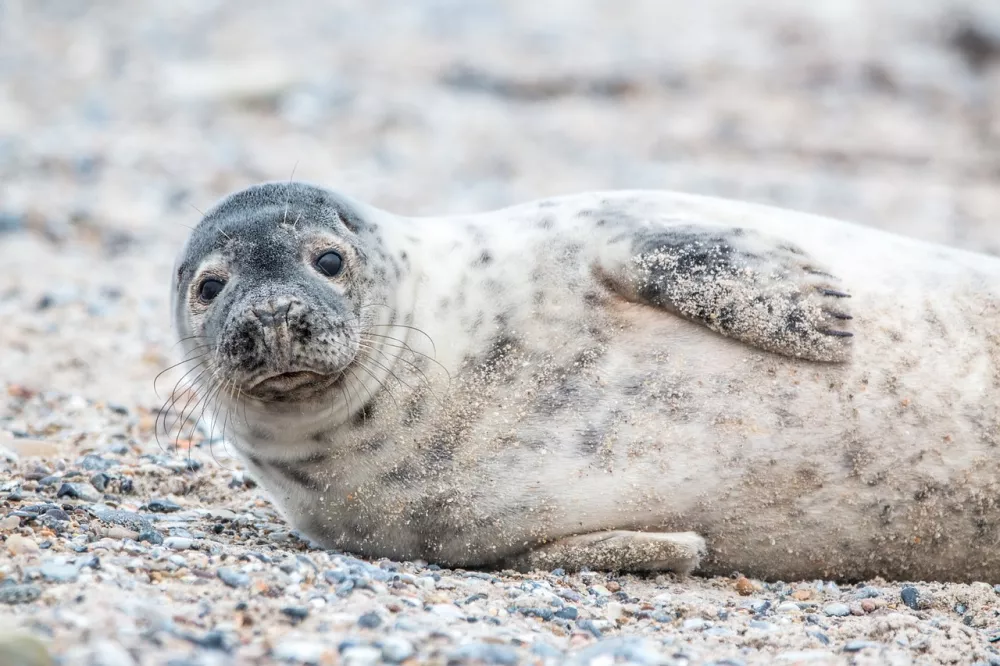
👍 Our tip: Spar Cave. This is a hidden sea cave near the village of Elgol, accessible only at low tide. It is decorated with shimmering calcite crystals and has an almost fairy-tale look. Passing through the cave is an experience in itself - it requires a short walk over coastal rocks, then you can explore the interior of the cave with a flashlight. This unusual trip will be enjoyed mainly by adventurers - because of the tide, you need to plan your return time well!
Accommodations
Broadford offers a range of accommodation, from small guesthouses, holiday houses to hotels, such as the Broadford Hotel, where the famous Drambuie Scotch whiskey is said to have been invented. The town also offers several restaurants and cafes that specialize in traditional Scottish food, often made with local ingredients, including fresh seafood.
Less than a kilometer and a half from the town center is the Hebridean Inn hotel. Thanks to its location further from the center, you can enjoy beautiful views of nature in this hotel. For relaxation, it offers a garden with outdoor furniture where you can prepare a picnic. You can park for free in the area.
Accommodation in the city center is offered by the Bonnie Lodge by Broadford Hotel. In the guesthouse you can use free private parking, a garden with a terrace or a bar.
For a complete offer of accommodation in Broadford, we recommend using A-HOTEL.com or Booking.com.